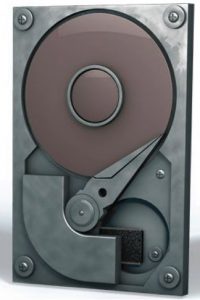History (1988): Miniature HDDs Enable Mobile Computing
2.5-inch and smaller HDDs serve portable needs from notebooks to music players.
This is a Press Release edited by StorageNewsletter.com on May 16, 2018 at 2:28 pmThis article comes from the Computer History Museum.
1988: Miniature disk drives enable mobile computing
2.5” and smaller HDDs serve portable needs from notebooks to music players
PrairieTek 220 2.5″ Drive (1988)

(PrairieTek)
Miniature HDDs enabled the rise of personal mobile devices and practical, lightweight portable computers in the late 1980s.
Founded by small disk pioneer Terry Johnson, PrairieTek, Longmont, CO, introduced a 20MB 2.5″ drive in 1988. At just 25mm high, the PT220 stimulated a wave of innovation in mobile computing. PrairieTek stumbled on the production of higher capacity products and was quickly overtaken by JVC and Conner Peripherals.
By 1992, Disk/Trend listed 11 manufacturers of 100 to 200MB devices.
Physical size shrank over the years with a 9.5mm height enclosure being accepted as the unofficial standard for all except the highest-storage capacity or thinnest laptops. In 2013, Western Digital and Seagate released 5mm height devices for sub-notebooks.
A 1.8″ drive from Integral Peripherals in 1991 found new applications in small consumer products such as video cameras, audio players and heart monitoring devices.
In 1992, Hewlett Packard introduced the 20MB 1.3” Kittyhawk drive used by EO, Inc. in an early pen-based tablet personal communicator, but that due to inadequate capacity failed in the intended notebook sector.
Conceived by Tim Reiley at the IBM Almaden Research Center, the 1999 1″ Microdrive with storage of 170MB and 340MB was soon followed by products from Seagate, Western Digital, and several start-ups.
Toshiba announced a 0.85″ drive in 2004 for mobile phones.
Toshiba, a supplier of mobile HDDs since introducing robust glass-based media in 1991, enabled Apple’s first iPod music player with the 1.8″ MK5002MAL 5GB drive in 2004.
Later iPods used Microdrives made by IBM, Hitachi and Seagate but due to higher reliability, smaller size, lower cost, and reduced power consumption, semiconductor flash storage has largely replaced HDD technology in handheld applications today.














 Subscribe to our free daily newsletter
Subscribe to our free daily newsletter

